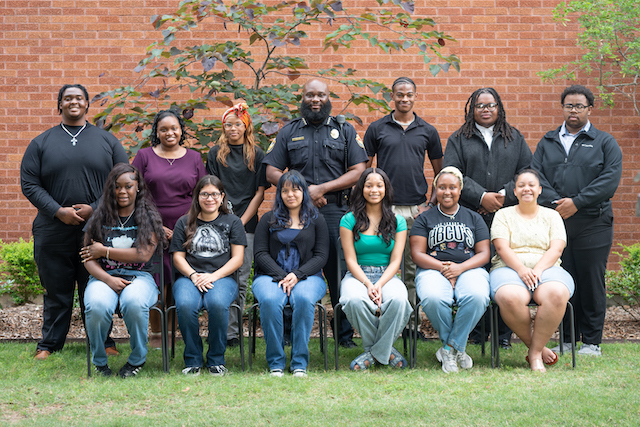MOORE OUTDOORS: Black bears continue to return
Published 11:09 pm Wednesday, November 9, 2016

- A black bear has fun with a deer feeder in East Texas. Photo submitted by hunter to Texas Parks & Wildlife Department. (Courtesy photo)
Black bears never totally disappeared in Texas but their numbers certainly plummeted after years of poaching.
Now over the last two decades a small but steady trickle of bears from Mexico have moved into and inhabited the Trans Pecos and an increase in reports in East Texas suggest migration from Louisiana, Arkansas and Oklahoma.
Recently at least four sightings have been documented on game trail cameras on Bowie, Red River and Smith counties according to the Texas Parks & Wildlife Department (TPWD).
TPWD officials speculate the bears, which appear to be young males, are looking to establish their own new home ranges and likely dispersed from Oklahoma or Arkansas where bear numbers have increased in recent years.
That variety of black bear is Ursus americanus luteolus, the Louisiana Black Bear, and it was just removed from the federal list of threatened species although it remains on the Texas list.
The fabled Louisiana bear according to official with the U.S. Fish and Wildlife Service (Service) became part of American culture after a hunting trip to Mississippi in 1902, where President Theodore Roosevelt refused to shoot a bear that was trapped and tied to a tree by members of his hunting party. The episode was featured in a cartoon in The Washington Post, sparking the idea for a Brooklyn candy-store owner to create the “Teddy” bear.
“President Theodore Roosevelt would have really enjoyed why we are gathered here today,” said Interior Secretary Sally Jewell.
“Working together across private and public lands with so many partners embodies the conservation ethic he stood for when he established the National Wildlife Refuge System as part of the solution to address troubling trends for the nation’s wildlife. As I said last spring when the delisting proposal was announced, the Louisiana black bear is another success story for the Endangered Species Act.”
A possible obstacle the bear’s return in the region is poaching, which still looms large in some areas. Shooting a Louisiana black bear (which all bears in East Texas are considered) is a state crime which could get a poacher in serious trouble.
Another potential problem is misidentification since bear and feral hogs can look similar at a distance especially when someone is not expecting to see a bear. Understanding black bear identification is important if you hunt in potential bear country.
So is understanding bear behavior.
According to the TPWD bears are normally shy and not aggressive to humans.
“But if a bear regularly visits a ranch or deer stand, people should try to scare it with rocks, a slingshot or air horn. If people encounter a bear at close range, they should talk calmly while backing away slowly. Don’t make direct eye contact, and don’t run away. If a bear approaches you, stand your ground and raise your arms, backpack or jacket to appear larger. Yell at the bear to scare it off.”
Unlike grizzly encounters where playing dead could be a saving grace, it could make things worse if a black bear decides to attack. The proper response to a black bear attack is to fight back.
Attacks are super rare and is current trends continue there will likely be more black bear sightings in Texas. Just the thought of seeing a black bear here in Texas makes things seem a bit wilder and gives hope to those of us concerned about the wildlife and wildlife habitat.
To report a black bear sighting in Texas, call a TPWD Wildlife Division regional office: West Texas (Alpine), (432) 837-2051; Central Texas (Kerrville), (830) 896-2500; East Texas (Tyler), (903) 566-1626; Panhandle/Rolling Plains (Canyon), (806) 655-3782; Cross Timbers (Brownwood), (325) 643-5977; South Texas (Pleasanton). (830) 569-8700.





